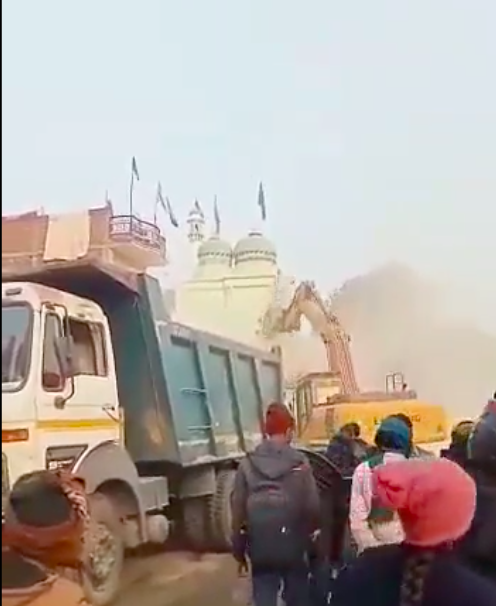Protests demanding the demolition of allegedly illegal mosques in Himachal Pradesh have intensified, leading to clashes between Hindu organizations and police in Kullu. A Muslim organization has countered that no mosques in the state are illegal; instead, delays in government map approvals are causing confusion.
Protest Highlights
The ‘Hindu Dharam Jagaran Yatra’ drew a significant crowd as participants marched from Hanuman Temple to Akhara Mosque under heavy security. Protesters, including many women, waved saffron flags and held placards advocating for the mosque’s demolition, with traditional musicians leading the way.
Background of the Dispute
The demand for demolishing supposed illegal mosques gained momentum following a scuffle on August 30 between a Muslim barber and a Hindu businessman in the Malyana area of Shimla, which escalated into a communal issue. Hindu groups assert that several mosques are unauthorized, while some local residents are calling for the identification of outsiders in the state.
Muslim Community’s Response
Naheem Ahmed, president of the Muslim Welfare Committee in Mandi, emphasized that no mosque in Himachal Pradesh is illegal. He stated that delays in map approvals are the main issue and expressed the community’s willingness to remove any structures found to be unauthorized. Following a meeting in Balh, it was decided to form a state-level committee to engage with the chief minister about the ongoing situation.
Government Stance
Kullu district authorities have confirmed that the mosque at Akhara Bazaar is not illegal, noting a discrepancy between its recorded size and actual dimensions. The mosque covers an area of 980 square meters, with a deviation of about 150 square meters. The case for its regularization is currently pending with the town and country planning department. Additionally, the Jama Masjid in Kullu is recognized as a pre-Independence structure listed in a state government gazette notification from August 15, 1970.
Recent Clashes
On September 11, protests in the Sanjauli area of Shimla over the demolition of a mosque resulted in injuries to ten people. A couple of days later, similar protests in Mandi led to police using water cannons to disperse crowds. In Kasumpti, Shimla, residents also submitted requests for the demolition of a mosque in their area, echoing sentiments from various Sunni communities across the state.
Conclusion
The mosque controversy in Himachal Pradesh underscores the complexities of communal relations and administrative challenges within the region. While Hindu groups persist in their demands for demolitions, the Muslim community maintains that all mosques are legitimate, attributing issues to bureaucratic delays. It remains crucial for local authorities and community leaders to foster dialogue to ensure harmony and address legal matters effectively.






